#mikasuki
Explore tagged Tumblr posts
Text


brothers Lee & Stephen Tiger of the band, Tiger Tiger; young fair-goers at the Miccosukee Arts and Crafts Festival (1974)
#tiger tiger#indigenous#miccosukee#1974#florida#traditional clothing#70s fashion#musician#band#lee tiger#stephen tiger#70s families#miccosukee tribe#child#singer#mikasuki#boots
49 notes
·
View notes
Text
Swamp Witch Travels: Finding Sacred Space
Myakka River and Paynes Creek State Parks

As I dive deeper into my practice of bioregional animism, I look to parks for sacred space and places to connect with spirits of all kinds. In Florida we live in cities divided by nature preserves and swamps, and we are also incredibly blessed to have an amazing State Parks system. These parks offer us peaks into ecology and history of the Land that reveal to us some of Its Mysteries. Here are a few things I’ve learned as a Folk Witch.

Make an offering when entering. For ancestral reasons, I use tobacco. Use what you're guided to. Introduce yourself, your intentions, etc. Also, pick up trash and be respectful. Don't wander in places you don't know, or take things you don't have knowledge on. It’s usually best to practice Leave No Trace but when have Witches been known to follow rules… Do as ye will. But always ask and give something in return.
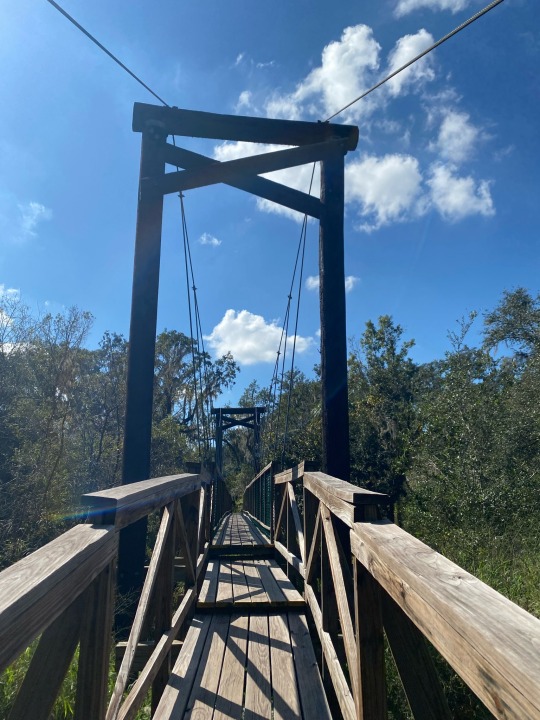
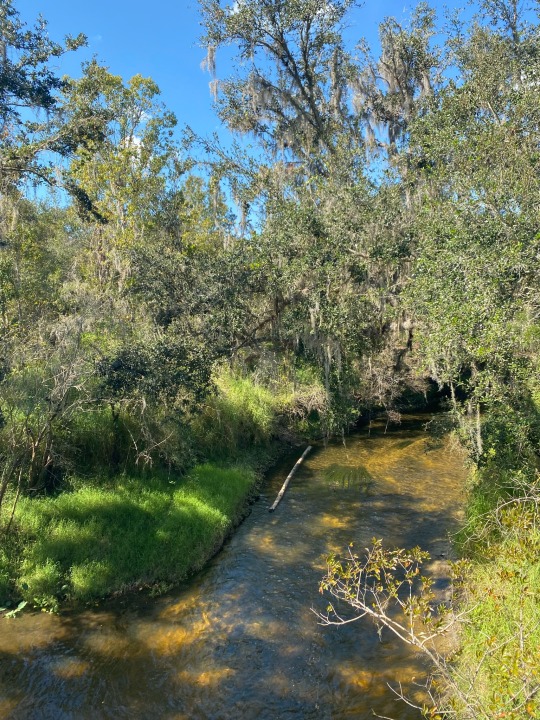
There are different spirits!
Trees, plants, rivers, hills and even entire forests and parks can have their own spirits. At parks like Myakka and Payne’s Creek, there are platforms you can climb for an aerial view of the park. This is a great place to connect with the Genus Loci of a place! (For more on Genus Loci, I recommend Folk Witchcraft by Roger J Horne) Some spirits will want to talk to you, some won’t. Respect their choices and don’t expect anyone to talk for free.

Protection is Key!
Protection is important for witches and animists. Many spirits and natural places are dangerous, for example some Rivers are known for drowning and can be seen as having a harsh and dangerous spirit. When protecting myself day to day I wear spiritual jewelry from my Cuban traditions. Shark and gator teeth serve as great protection from water spirits and in general. My spiral shell ring is protective and I often use it in ritual. Bodies of water are also great places to bless things and hold rituals of cleansing and power! Not only spiritual protection, but physical protection is needed as well. In these swamps, we have gators, sharks, panthers, bobcats, bears, snakes, PEOPLE and even more things that would gladly expedite your role in the food chain. I’m not saying be afraid of animals, rather have respect and recognize you are in their domain. Carry bear spray, don’t wander too far off known trails, and be careful of other people.
I once heard a saying, the Swamp knows everything about death, and doesn’t consider it a tragedy.

Enjoy the Scenery, and Learn!
Take it all in and take your time! If you need to escape heat and mosquitos check out the visitor centers and gift shops! I justify spending a bit too much here on considering it an offering to the Land. Try talking to the people who work here or making friends! This is a great way to learn Folklore and secret places to explore.

On Remembering Ancestors of the Land
In working with the Land, you must honor the Ancestors of the Land. These are the spirits of all the people who lived on the Land before you. For me, this begins with my Ancestors and the other Indigenous groups of the area. In Florida, the tribes who remain today are the Seminole and Mikasuki. We should look to Indigenous tribes for wisdom on how to approach and respect the Land, but that doesn’t mean read online about it and go appropriate it. It means go and actually talk to real life people. You can and certainly should also honor other people, including any folk saints or historical figures who may serve as tutelary spirits or otherwise.

And always remember to say Fuck the Colonizers!
Happy Witching Friends, May the Dry Season bring us all Renewal!
#witchcraft#florida#bruja#brujeria#witch#bioregional animism#florida witch#santeria#swamp witch#traditional witchcraft#espiritismo#taino#taino spirituality#atabey#folk magic#folkloric witch#folk witchcraft#folk witch
126 notes
·
View notes
Text
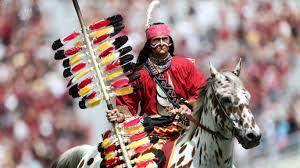



The Seminole are a Native American people who developed in Florida in the 18th century. Today, they live in Oklahoma and Florida, and comprise three federally recognized tribes: the Seminole Nation of Oklahoma, the Seminole Tribe of Florida, and the Miccosukee Tribe of Indians of Florida, as well as independent groups.
The word "Seminole" is almost certainly derived from the Creek word simanó-li. This has been variously translated as "frontiersman", "outcast", "runaway", "separatist", and similar words. The Creek word may be derived from the Spanish word cimarrón, meaning "runaway" or "wild one", historically used for certain Native American groups in Florida.

Native American refugees from northern wars, such as the Yuchi and Yamasee after the Yamasee War in South Carolina, migrated into Spanish Florida in the early 18th century. More arrived in the second half of the 18th century, as the Lower Creeks, part of the Muscogee people, began to migrate from several of their towns into Florida to evade the dominance of the Upper Creeks and pressure from encroaching colonists from the Province of Carolina. They spoke primarily Hitchiti, of which Mikasuki is a dialect. This is the primary traditional language spoken today by the Miccosukee in Florida. Joining them were several bands of Choctaw, many of whom were native to western Florida. Some Chickasaw had also left Georgia due to conflicts with colonists and their Native American allies. Also fleeing to Florida were African Americans who had escaped from slavery in the Southern Colonies
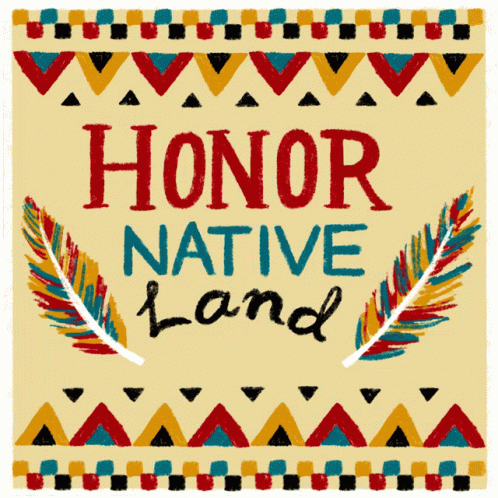
As they established themselves in northern and peninsular Florida throughout the 1700s, the various new arrivals intermingled with each other and with the few remaining indigenous people. In a process of ethnogenesis, they constructed a new culture which they called "Seminole", a derivative of the Mvskoke' (a Creek language) word simano-li, an adaptation of the Spanish cimarrón which means "wild" (in their case, "wild men"), or "runaway" [men].[ The Seminole were a heterogeneous tribe made up of mostly Lower Creeks from Georgia, who by the time of the Creek War (1813–1814) numbered about 4,000 in Florida. At that time, numerous refugees of the Red Sticks migrated south, adding about 2,000 people to the population. They were Creek-speaking Muscogee, and were the ancestors of most of the later Creek-speaking Seminole. In addition, a few hundred escaped African-American slaves (known as the Black Seminoles) had settled near the Seminole towns and, to a lesser extent, Native Americans from other tribes, and some white Americans. The unified Seminole spoke two languages: Creek and Mikasuki (mutually intelligible with its dialect Hitchiti), two among the Muskogean languages family. Creek became the dominant language for political and social discourse, so Mikasuki speakers learned it if participating in high-level negotiations. The Muskogean language group includes Choctaw and Chickasaw, associated with two other major Southeastern tribes.
In part due to the arrival of Native Americans from other cultures, the Seminole became increasingly independent of other Creek groups and established their own identity through ethnogenesis. They developed a thriving trade network by the time of the British and second Spanish periods (roughly 1767–1821). The tribe expanded considerably during this time, and was further supplemented from the late 18th century by escaped slaves from Southern plantations who settled near and paid tribute to Seminole towns. The latter became known as Black Seminoles, although they kept many facets of their own Gullah culture.
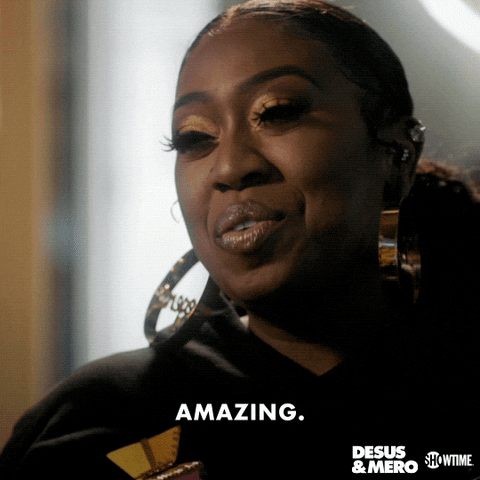
During the colonial years, the Seminole were on relatively good terms with both the Spanish and the British. In 1784, after the American Revolutionary War, Britain came to a settlement with Spain and transferred East and West Florida to it.
The Spanish Empire's decline enabled the Seminole to settle more deeply into Florida. They were led by a dynasty of chiefs of the Alachua chiefdom, founded in eastern Florida in the 18th century by Cowkeeper. Beginning in 1825, Micanopy was the principal chief of the unified Seminole, until his death in 1849, after removal to Indian Territory. This chiefly dynasty lasted past Removal, when the US forced the majority of Seminole to move from Florida to the Indian Territory (modern Oklahoma) after the Second Seminole War. Micanopy's sister's son, John Jumper, succeeded him in 1849 and, after his death in 1853, his brother Jim Jumper became principal chief. He was in power through the American Civil War, after which the U.S. government began to interfere with tribal government, supporting its own candidate for chief.
After raids by Anglo-American colonists on Seminole settlements in the mid-18th century, the Seminole retaliated by raiding the Southern Colonies (primarily Georgia), purportedly at the behest of the Spanish. The Seminoles also maintained a tradition of accepting escaped slaves from Southern plantations, infuriating planters in the American South by providing a route for their slaves to escape bondage.
After the United States achieved independence, the U.S. Army and local militia groups made increasingly frequent incursions into Spanish Florida to recapture escaped slaves living among the Seminole. American general Andrew Jackson's 1817–1818 campaign against the Seminoles became known as the First Seminole War. Though Spain decried the incursions into its territory, the United States effectively controlled the Florida panhandle after the war.


#african#afrakan#kemetic dreams#africans#brownskin#brown skin#afrakans#asians#asian#asian chick#asian babe#asian butt cheeks#asian beauty#asian cutie#asian babes#asian girl#asian girls#asian fashion#asian goddess#asian perfection#asian model#asian tattoos#asianbeauty#asian women#asianfemale#asiangirl#asianpeople#asiansexy#asianwomen#beautiful asian women
17 notes
·
View notes
Text
hrmmmm. im not native but im tempted to draw a seminole or mikasuki miku for florida rep, since cuban and pr mikus abound already
6 notes
·
View notes
Text
Dr. Frank H. Wood (1929-2023)

Beloved husband, father, grandfather, and teacher, Frank was born Thanksgiving Day in Cherryvale, KS. As a child, he worked in the family dairy, and following his father's footsteps, Frank attended Choate and Harvard (1951). He took a Masters in Education at Haverford Quaker College. Frank married Raquel Kaufman at the Radnor Friends Meeting in 1953.
In 1954, Frank, Raquel, and baby Matthew embarked on a great adventure when Frank became a teacher on the Big Cypress Seminole Indian Reservation in the Everglades. Here they participated as community members: Teacher Frank in the one room schoolhouse and Dietitian Raquel as the native Mikasuki was still the dominant language.
In 1956, they came to Minneapolis where Edmund (Ned) was born and Frank worked for the Minneapolis Public Schools. He became the first teacher in the district for children with behavioral problems. When Special Education became a discipline, he joined the Ph.D program at the University of Minnesota, graduating in 1965. He remained at the U as a professor of Special Education from 1965-1984. Child Mina was born in 1966.
Frank and Raquel were lifelong Quakers, members of the Twin Cities Friends Meeting, where they raised their children, and Prospect Hill Meeting; active in regional and national Quaker life, the American Friends Service Committee, Friends for a Non-Violent World, were founders of the Friends School of MN, supporters of the Scattergood Friends School of lowa and the Ramallah Friends School.
Frank was a storyteller and dog lover, carpenter, boatwright, self-taught musician, and photographer. He was a gifted conversationalist, genuinely interested in all, had great compassion for those who were "different," and encouraged his children, students and friends to follow their inner leading, however unusual. He enjoyed a contemplative life with books and the natural world.
Frank is preceded in death by his parents, Mina and Willis Wood, sister Libby, sister-in-law Dixie and grandson Dan. He is survived by wife Raquel, brother Bill and children Matthew, Ned (Veronica) and Mina (Greg), grandchildren Avram (Grace), Andie, and Ash.
His memorial will be held at the Friends School of Minnesota on January 27, 2024 at 10:00 AM.
1 note
·
View note
Text
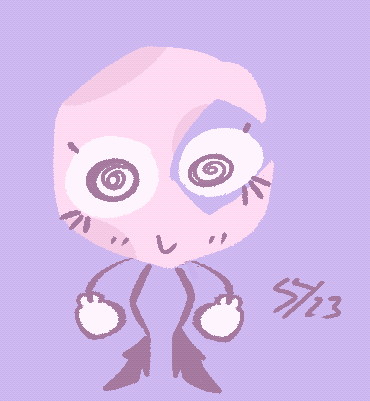
Animated Mikasuki dancing , quite proud :]
6 notes
·
View notes
Text
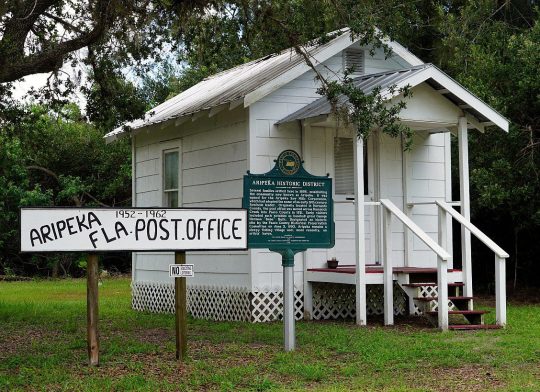
Aripeka, Florida is a mix of history and natural charm on Florida’s Nature Coast. The 120-acre town is surrounded by Gulf water, marshes, a sandhill preserve and two natural fresh water springs. Aripeka is on the Gulf of Mexico, about two miles west of U.S. 19 in either Hernando County (via Osowaw Boulevard) or Pasco County (via Aripeka Road), AKA County Road 595. Let me explain the town’s split personality: it’s partly in Pasco County and partly in Hernando County with the South Hammock Creek Bridge serving as the dividing line. The creek is an inlet for the Gulf, and the bridge accommodates two vehicle lanes and areas for fishing. According to Eric, a young fisherman I met on the bridge, it’s possible to catch snapper, redfish, and snook at that location. What I saw in the shallow, murky water was different: pinfish, needlefish, and mullet. Eric is from New Jersey and I am from Minnesota so we shared a laugh at how different the fish are here in Florida. When I said, “Pinfish are mostly for bait, right?” trying to act knowledgeable, it caused another smile. Eric said, “No, you can eat them.” He also said that in the winter months, the water is crystal clear. Eric and a pinfish on the South Hammock Creek bridge. Image courtesy of Deanna Dammer Kimbrough. Norfleet’s Fish Camp and Carl’s Store are adjacent to the South Hammock Creek Bridge. The Camp is private property, but I could see several folks dressed in swimming suits having fun on the dock. Enjoying Aripeka Florida Other excellent ways to enjoy Aripeka include kayaking, canoeing, and SCUBA diving. Aripeka has its own library, a community farmer’s market, and even a Community Club that was constructed in 1960 on donated land. Aripeka has its own library, farmers market, and community clubhouse that was built on donated land in 1960. Image by Diane Bedard. One of the favorite places for visitors is the Post Office, located conveniently on Aripeka Road. It has gone through many different names and locations (see related section in this article), but it is an official, functioning postal service. As always, you want to be sure to check with businesses and clubs for their hours of operation before going there. Be sure to stop in at Norfleet’s store. The Norfleet family have been a part of Aripeka for many generations and the store has been a part of the community for over 50 years. Image by Diane Bedard. The 2010 Census reported 308 people in Aripeka, and I saw a mix of really old, not too old, sort of new, and really new homes. Some of the homes were more like estates. There is a real mix of homes in Aripeka – some old, some new, some large, some not. This is the view looking west from the Hammock Creek Bridge. I wouldn’t go so far as to call Aripeka a gated community, but there are a lot of fences and gates to keep privacy for the residents. Though there doesn’t seem to be much room for expansion, I did see several real estate signs advertising homes and empty lots for sale. I guess nothing stays the same. How Did Aripeka Get Here? According to Florida’s Adventure Coast website, the accepted history of Aripeka is that it was named after Sam Jones, a famous Mikasuki chief, who was called Aripeka or Aripeika. “The name is possibly corrupted from Muskogee “abihka” (pile at the base or heap at the root), which was a contest for supremacy among warriors who piled up scalps, covering the base of the war-pole.” Sometimes names are more intriguing when they are left to the imagination. The caption on this 1967 postcard says, “This island park on hiway 595, two miles west of hiway 19, between New Port Richey and Weeki Wachee Springs, provides free picnic sheds, beach, boat ramp and fishing. Overnight camping at nominal charge; ice, groceries, gas, Notary . . . Night Arrivals: If store closed, drive in and camp. Y'all Come!” Image courtesy of Fivay.org An aerial view of the unincorporated town of Aripeka helps us see why it was originally designated Gulf Key. In 1859, the property was “deeded to” Major John Parsons (an original founder of Bay Port) and Nannie Yulee (whose father, Senator David Yulee, owned a sugar mill and plantation in Homosassa). Gulf Key was officially settled in 1873 (per the Florida State Gazetteer). By 1885, Gulf Key had a reported population of just over 30 people. It had become a shipping port, which by the early 20th Century was big competition for railroad transportation. Carrie Littell Stevens poses with an alligator captured outside her home on Hammock Creek, about 1900. Carrie and her husband Dan were members of early pioneer families who settled at Aripeka. From 1898 to 1902 the post office was known as Wheeler. This is a picture of the photograph hanging at the tax collector’s office, provided to Mike Olson by the Norfleet family. The number of residents on Gulf Key increased by at least three in 1886 with the arrival of George W.C. Littell, his wife Amanda, and their sickly son Weaver. Their reason for moving to Florida is said to have been to improve Weaver’s health. George Littell would become a teacher in 1893 at what was then the Argo School, and in 1898 he built the Littell Fish Camp. Mr. Corwin Pearl (C.P.) Littell and his wife, Hilma Sue, 1960, in front of their house. They arrived at Aripeka in 1886, then known as Gulf Key. George Littell became a teacher and they built Littell Fish Camp. Image by Francis Johnson courtesy of Florida State Archives. Electricity and Telecommunications Can you imagine when the only option for getting your mail was to go to the Post Office? Can you imagine not being able to flip a switch to turn on a light or pick up a telephone to call family or friends? If you lived in Aripeka before 1883, you wouldn’t even have had a post office. It wasn’t until 1947 that the Rural Electrification Administration project brought electricity to Aripeka, and 1950 when phone lines were strung up in the small gulf coast town. I found no evidence of how many people actually had electricity or phones installed right away or how much it cost. Telephone service was brought to Aripeka in 1950. Party lines were common in rural telephone markets through the 1970s. I personally remember the days of “party lines”, where you had to share phone service and hoped no one listened in on your conversation. I’m betting that was the case in Aripeka way back then. The Post Office is Established in 1883 The first post office in Aripeka was originally named the Gulf Key Post Office, established in October 1883. Three years later, it was renamed Argo, only to become Gulf Key again five years after that. Then, in 1895 the Aripeka Post Office was established, with George Pine as postmaster, who was originally from New Jersey. In 1896 the Gulf Key Post Office was “discontinued” and two years later the Wheeler Post Office came into being but was discontinued in 1902. Hernando County intersection in Aripeka. Image by Deanna Dammer Kimbrough. If all of that seems confusing, Fivay.org shows that “The first post office was on the Hernando County side, and in the early days the northern part of the town was called Aripeka and southern part of the town was called Hammock Creek.” Pasco County intersection in Aripeka. Yes. It is the same road. Image by Deanna Dammer Kimbrough. In 1887, Pasco County was born, having separated from Hernando County, and taking Aripeka with it! All of this must have been unsettling for the residents. We don’t know how many towns or areas in the United States have gone through name changes over the decades... But that’s another story. Aripeka has the Prospect of Becoming a Thriving Town That is a quote from former Postmaster George Pine. He also noted that a store and church were built in the small bayside town, and several families from Arkansas built homes. By the early 1900s, things were beginning to thrive. In 1908, the First Baptist Church was organized. Aripeka's First Baptist Church was organized in 1908. It is still used today. Image by Deanna Dammer Kimbrough. The Aripeka Company was a corporation developed by Richard Abbey Ellis. The company’s main goal was to sell small tracts to be used solely for building homes. Another quote from Ellis which appeared in a 1908 edition of the Tampa Morning Tribute states an additional goal: “...to keep out speculators, thus securing industrious, law-abiding home-makers for citizens, and keeping out, or, when necessary, driving out, the lawless, undesirable element that so often gets control of and ruins settlements that would otherwise be most desirable.” Wow! A view of Aripeka's inland marshes. Image courtesy of Deanna Dammer Kimbrough. That was way before the Fair Housing Act of 1968. In fairness to Mr. Ellis, his company did provide financial help for emigrants who could repay the loan “out of the land itself.” Eventually, as it turns out, Ellis did not have enough money to gain title of the town. He had to sell. Aripeka Keeps Thriving E.G. Willingham was a prosperous lumber merchant from Atlanta, Georgia. In September 1910, the Atlanta Constitution reports that Willingham bought the entire town of Aripeka, with the exception of the church and schoolhouse. The purchase price was $15,000. A historic photo of the Osowaw Inn in Aripeka. The hotel burned in the 1960s. Image courtesy of Florida State Archives. At that point in time, there were many homes, a couple of hotels, some stores, the post office of course, and even “parks, a church, schoolhouse, and everything pertaining to a first-class community.” Willingham planned to develop the town even more and make it into “an important municipality.” As early as 1917, he was the owner of the Hotel Osowaw, which he sold to Mrs. Josephine Lynch in 1921, who in turn sold it to N.P. Lynch in 1924. Moonshine and a still in the attic. Image courtesy of Florida State Archives. Ironically, the hotel, then called the Os-o-Wa Inn, was raided by Prohibition Government agents in the pre-dawn hours of October 1931. The Os-O-Waw burned in the 1960s. According to local lore, Babe Ruth lost his World Series ring in a privy at the Inn. Who put the Famous in Aripeka? Most folks who have lived in Pasco, Hernando, or Citrus counties have heard about Babe Ruth having stayed in the Osowaw Inn and a couple of cabins in Aripeka. It’s true. Apparently, The Babe loved to hunt and fish while in the area. Other local lore says some of The Babe’s Yankee teammates were with him on occasion and even Jack Dempsey. The cabin that "The Babe" stayed in while fishing Aripeka's fine waters. Image courtesy of Florida State Archives. At one time Aripeka had its own artist colony. In 1976, James Rosenquist moved to Aripeka. The well-known Modern/Pop art painter lived there until April 2009 when a raging brush fire destroyed his home, office studio and all of his artwork. A residence located off of Osowaw Blvd. in the Hernando County side of Aripeka. According to Carl Norfleet, this is the former Aripeka school, in operation in the first half of the 20th century. According to another resident, it was James Rosenquist's home at one point. Image courtesy of Jeff Miller. Aripeka’s artist colony also attracted landscape artist Leslie Neumann, who moved there from New York in 1989. She still lives and paints in what she calls “paradise”. Remember Anita Bryant? She was pretty famous as a singer in the 50s and 60s, perhaps most notably for the song, Paper Roses, that she recorded long before a very young Marie Osmond hit the charts with it. A 1970 Florida Orange Growers ad featuring Anita Bryant as the organization's spokesperson. Image courtesy of Florida Orange Growers. The former Miss Oklahoma, orange juice spokeswoman, brand ambassador for the Florida Citrus Commission, and anti-gay rights activist ended “a decade-long hiatus from show business” by touring in a motor home while she lived in Florida. In 1988 Bryant performed at the Elks Lodge of Aripeka. The 80-year-old now lives in her home state of Oklahoma. Storms, Tornadoes and Earthquakes Yes, there has been some earthquake activity recorded at Aripeka. The City-Data.com website shows the most recent activity in the Aripeka area occurring on September 10, 2006, registered a magnitude of 5.9 which was classified as “moderate” and occurring “286.6 miles away from the city center.” That same website reports that tornado activity in the Aripeka area is “slightly above Florida state average.” In 1966 and 1983 tornadoes reached enough wind speed to cause death and damage. This house was literally raised from its foundation, moved and set down along Osowaw Blvd. by the "No Name Storm" of 1993. Image by Jeff Cannon. Probably the most unforgettable storm to hit the Nature Coast was on March 13, 1993. The No Name Storm hit the coast at around midnight without warning. Aripeka was one of the “hardest hit areas,” which included Hernando Beach, Bayport, Pine Island, and Weeki Wachee Gardens. There was one death reported in Aripeka, but the damage to all of those areas was tremendous. As a Times staff reporter wrote on the 25th anniversary, “The storm had no name. But few will forget its angry face.” It was also dubbed “The Storm of the Century,” Hopefully the 21st Century won’t find a way to compete with that frightening moniker. The eastern view from the Hammock Creek Bridge. Image by Diane Bedard. Ending on a High Note Aripeka is still a quaint, peaceful town, more akin to a village. Houses line the banks, folks fish from the bridges, motorcycles, and cars ride through on the main road, and the vibe is colorful and filled with nature. Another gentle step back into history Read the full article
0 notes
Text
stamm der seminolen aus florida
🎰🎲✨ Erhalten Sie 500 Euro und 200 Freispiele, plus einen zusätzlichen Bonus, um Casinospiele mit nur einem Klick zu spielen! ✨🎲🎰
stamm der seminolen aus florida
Die Ursprünge der Seminolen in Florida reichen weit zurück in die Geschichte dieses Landes. Die Seminolen sind ein indianischer Stamm, der heute vor allem in Florida ansässig ist. Ihre Geschichte ist geprägt von Kämpfen um ihr Land und ihre Unabhängigkeit.
Die Seminolen haben ihre Wurzeln in verschiedenen indianischen Stämmen, darunter die Creek, Mikasuki und Hitchiti. Sie lebten ursprünglich im Südosten der Vereinigten Staaten, im heutigen Georgia, Alabama und Florida. Während der Kolonialzeit wurden sie von den spanischen, britischen und später auch amerikanischen Siedlern beeinflusst.
Im 19. Jahrhundert begannen die Spannungen zwischen den Seminolen und den amerikanischen Siedlern zuzunehmen. Die Seminolen weigerten sich, ihr Land an die Amerikaner abzutreten und kämpften entschlossen für ihre Unabhängigkeit. Der sogenannte Seminolenkrieg (1835-1842) war ein blutiger Konflikt, der viele Opfer auf beiden Seiten forderte.
Obwohl die Seminolen militärisch besiegt wurden, gelang es ihnen dennoch, in Florida zu bleiben und ihren traditionellen Lebensstil fortzusetzen. Heute sind die Seminolen als souveräne Nation anerkannt und verfügen über ein eigenes Reservat in Florida.
Die Seminolen haben ihre kulturellen Traditionen und Bräuche bewahrt und sind stolz auf ihre indianische Identität. Sie sind bekannt für ihre kunsthandwerklichen Fähigkeiten, insbesondere das Flechten von Körben und die Herstellung von Schmuck. Zudem betreiben sie erfolgreiche Geschäfte, darunter Casinos und Tourismusunternehmen, um ihre Gemeinschaft zu unterstützen.
Die Geschichte der Seminolen in Florida ist ein wichtiger Teil der indigenen Geschichte dieses Landes. Sie sind ein Beispiel für den Kampf um die Bewahrung der eigenen Kultur und Identität in einer sich ständig verändernden Welt. Die Seminolen haben sich erfolgreich angepasst und sich gleichzeitig treu geblieben, und sind Teil des reichen kulturellen Erbes Floridas.
Die Geschichte des Seminolen-Stammes ist eine faszinierende und bewegte Geschichte. Die Seminolen sind ein indianischer Stamm, der ursprünglich aus dem Südosten der Vereinigten Staaten stammt. Ihr traditionelles Siedlungsgebiet umfasste die heutigen Bundesstaaten Florida, Georgia, Alabama und South Carolina.
Die Ursprünge des Seminolen-Stammes reichen zurück in die Zeit der europäischen Kolonialisierung Amerikas. Im 18. Jahrhundert waren die Seminolen ein Zusammenschluss verschiedener kleiner Stämme, die unter anderem von den Creek-Indianern abstammten. Gemeinsam bildeten sie eine starke und einflussreiche indianische Nation.
Während des 19. Jahrhunderts erlebte der Seminolen-Stamm eine schwere Zeit. Die US-Regierung versuchte, die indianischen Stämme zunehmend zu vertreiben und ihr Land zu übernehmen. Die Seminolen wehrten sich jedoch mit aller Kraft gegen diese Enteignungen und leisteten erbitterten Widerstand.
Besonders bekannt ist der Seminolen-Krieg, der von 1835 bis 1842 stattfand. Die Seminolen widersetzten sich der Zwangsumsiedlung, die ihnen von der Regierung auferlegt wurde, und flohen in die Everglades, ein Sumpfgebiet im Süden Floridas. Dort führten sie einen Guerillakrieg gegen die US-Truppen. Obwohl die Seminolen viele Verluste erlitten, gelang es ihnen, ihre verborgenen Siedlungen zu verteidigen und ihre Unabhängigkeit zu wahren.
Trotz der Schwierigkeiten und des großen Drucks, dem sie ausgesetzt waren, haben die Seminolen ihren Stamm und ihre Kultur bewahrt. Sie haben ihr eigenes politisches System und ihre eigenen Traditionen und Bräuche bis heute fortgesetzt.
Heute leben die Seminolen hauptsächlich in Reservaten in Florida. Sie betreiben dort erfolgreiche Geschäfte, darunter Casinos und Tourismusunternehmen, die ihnen ein eigenständiges Einkommen ermöglichen. Die Seminolen sind stolz auf ihre Geschichte und ihre Widerstandsfähigkeit und bemühen sich, ihr Erbe zu bewahren und weiterzugeben.
Die Geschichte des Seminolen-Stammes ist ein Beispiel dafür, wie indianische Nationen trotz großer Herausforderungen ihre Identität und ihre Kultur bewahren können. Durch ihren Widerstand und ihre Entschlossenheit haben die Seminolen ihre Existenz gesichert und sind weiterhin ein wichtiger Teil der amerikanischen Gesellschaft.
Die Seminolen sind ein indianischer Stamm, der in Florida beheimatet ist. Sie haben eine einzigartige Kultur und Geschichte, die eng mit dem Land und den Traditionen Floridas verbunden ist. In diesem Artikel werden wir uns mit einigen wichtigen Aspekten der Seminolen-Kultur befassen.
Die Seminolen haben eine reiche mündliche Tradition, in der Geschichten und Legenden von Generation zu Generation weitergegeben werden. Diese Geschichten erzählen von den Ursprüngen des Stammes und den Erfahrungen, die sie im Laufe der Jahrhunderte gemacht haben. Die Seminolen glauben an die enge Verbindung zwischen Mensch und Natur und an die spirituelle Bedeutung des Landes, auf dem sie leben.
Ein wichtiger Teil der Seminolen-Kultur ist ihre Kunst und Handwerkskunst. Die Seminolen sind dafür bekannt, wunderschöne Körbe, Keramik und Schmuck herzustellen. Diese Kunstwerke spiegeln die Traditionen und Lebensweise des Stammes wider und werden oft als Symbole der Seminolen-Identität betrachtet.
Die Seminolen haben auch eine reiche musikalische Tradition. Sie verwenden traditionelle Instrumente wie Trommeln und Flöten, um Lieder zu spielen, die wichtige Ereignisse wie Geburten oder Kriegszeiten feiern. Die Musik ist ein Ausdruck ihrer spirituellen und kulturellen Verbundenheit und wird oft bei Zeremonien und Festen gespielt.
Neben ihrer Kunst und Musik sind die Seminolen auch für ihre traditionelle Kleidung bekannt. Die Frauen tragen oft Röcke und Blusen aus buntem Stoff, während die Männer mit traditionellen Kopfschmuck und Kleidung gekleidet sind. Diese Kleidung zeigt den Stolz und die Verbundenheit der Seminolen mit ihrer Kultur und Herkunft.
Eine weitere wichtige Tradition der Seminolen ist die Jagd und Fischerei. Diese Aktivitäten sind nicht nur für die Nahrungsbeschaffung von Bedeutung, sondern haben auch eine spirituelle und kulturelle Bedeutung. Die Seminolen respektieren die Natur und nutzen nachhaltige Methoden, um ihre Ressourcen zu nutzen.
Insgesamt haben die Seminolen eine faszinierende Kultur, die eng mit der Natur, der Tradition und den Werten ihres Stammes verbunden ist. Sie haben eine reiche mündliche Tradition, stellen kunstvolle Handwerkskunst her, spielen traditionelle Musik, tragen ihre traditionelle Kleidung und haben enge Beziehungen zur Jagd und Fischerei. Die Seminolen sind stolz auf ihre Kultur und bemühen sich, sie an zukünftige Generationen weiterzugeben.
Die Seminolen sind ein indigenes Volk, das in den Südstaaten Floridas beheimatet ist. Sie haben eine reiche kulturelle Tradition und feiern eine Vielzahl von Traditionen und Bräuchen, die ihre Geschichte und ihre Verbundenheit mit der Natur widerspiegeln.
Eine der bekanntesten Traditionen der Seminolen ist das Green Corn Festival, auch bekannt als das Festival des grünen Mais. Dieses Fest findet jedes Jahr im späten Frühling statt und markiert den Beginn der Maisernte. Während des Festivals kommen die Seminolen zusammen, um Dankbarkeit für die Fülle der Ernte auszudrücken. Es werden traditionelle Tänze aufgeführt, Geschichten erzählt und Spiele gespielt. Es ist eine Zeit der Freude und des Feierns, während die Gemeinschaft zusammenkommt, um die Gaben der Natur zu ehren.
Ein weiterer wichtiger Brauch der Seminolen ist die traditionelle Fischerei. Die Seminolen haben seit Jahrhunderten die Gewässer Floridas für ihre Nahrung und ihr Überleben genutzt. Die Männer gehen auf Fischfang und verwenden traditionelle Methoden wie Netze und Speere, um ihre Beute zu fangen. Diese Fischerei ist nicht nur für die Ernährung wichtig, sondern auch symbolisch für die Verbundenheit der Seminolen mit der natürlichen Umgebung.
Die Seminolen sind auch für ihre handwerklichen Fähigkeiten bekannt. Das kunstvolle Flechten von Körben und die Herstellung von traditionellem Schmuck sind wichtige kulturelle Praktiken. Diese handgefertigten Gegenstände sind nicht nur Kunstwerke, sondern auch Ausdruck der Seminolen-Identität und werden oft zu zeremoniellen Anlässen verwendet.
Ein weiterer Brauch der Seminolen ist das Powwow, ein öffentliches Fest, zu dem Menschen aus verschiedenen indianischen Stämmen zusammenkommen. Dieses Fest wird oft von traditionellen Tänzen, Gesängen und Spielen begleitet. Es ist eine Gelegenheit für die Seminolen, ihre Kultur zu präsentieren und ihre Gemeinschaft zu stärken.
Traditionen und Bräuche sind für die Seminolen von großer Bedeutung, da sie ihre Identität und ihr Erbe bewahren möchten. Diese Traditionen spiegeln ihre enge Verbundenheit mit der Natur und ihrem Stamm wider und zeigen ihre lebendige und vielfältige Kultur.
Die Seminolen waren ein indianischer Stamm, der in Florida beheimatet war und einen erheblichen Einfluss auf die Geschichte und Kultur des Staates hatte. In diesem Artikel werden wir uns mit fünf wichtigen Einflüssen der Seminolen auf Florida befassen.
Kulturelle Präsenz: Die Seminolen hatten eine reiche und vielfältige Kultur, die bis heute in Florida spürbar ist. Sie hatten ihre eigenen Sprache, Bräuche, traditionelle Kleidung und kulinarische Spezialitäten. Einige ihrer kulturellen Einflüsse sind in den regionalen Festivals und Feiern in Florida zu sehen, bei denen Tänze, traditionelle Musik und Kunsthandwerk der Seminolen präsentiert werden.
Entdeckung und Erhaltung von Naturschätzen: Die Seminolen waren Experten in der Navigation der Sumpfgebiete Floridas und kannten sich bestens mit der reichen Tier- und Pflanzenwelt aus. Durch ihr Wissen und ihre Fähigkeiten halfen sie den späteren Siedlern bei der Entdeckung und Erschließung der Naturschätze Floridas, wie den Everglades. Die Seminolen trugen auch zum Naturschutz bei und kämpften für den Erhalt der Umwelt in Florida.
Landwirtschaftliche Praktiken: Die Seminolen waren fähige Landwirte und waren bekannt für ihre Kenntnisse über den Anbau von Pflanzen in den schwierigen Bedingungen Floridas. Sie entwickelten Methoden zur Bewirtschaftung des Sumpflands und zum Anbau von Nutzpflanzen wie Mais, Bohnen und Kürbissen. Einige ihrer landwirtschaftlichen Techniken wurden von den europäischen Siedlern übernommen.
Widerstand gegen die Kolonisierung: Die Seminolen leisteten auch jahrelangen Widerstand gegen die Kolonisierung Floridas durch die europäischen Siedler. Sie kämpften gegen die Versuche, ihr Land zu konfiszieren und zwangen die Regierung zu Verhandlungen. Der Widerstand der Seminolen trug dazu bei, dass Florida bis heute eine vielfältige Bevölkerung hat, in der auch indianische Kulturen präsent sind.
Tourismus und Wirtschaft: Die Kultur und Geschichte der Seminolen ziehen heute Touristen aus der ganzen Welt an. Viele Seminolen betreiben erfolgreich Casinos, Resorts und andere touristische Unternehmen in Florida. Ihre Präsenz in der Tourismusbranche hat dazu beigetragen, die Wirtschaft Floridas zu beleben und zu diversifizieren.
Der Einfluss der Seminolen auf Florida ist bis heute allgegenwärtig. Ihre kulturellen Beiträge, ihre Rolle bei der Erhaltung der Umwelt und ihre wirtschaftliche Präsenz machen sie zu einem unverzichtbaren Teil des Staates.
0 notes
Photo

Beans! This is my kitty, Mikasuki. Isn't he pretty? 😍😍 https://www.instagram.com/p/Co7I--YOn3O/?igshid=NGJjMDIxMWI=
0 notes
Text

Mikasuki Cowboys, Dania Reservation 1958
#indigenous cowboys#native american#native american cowboys#cowboy#western#y’all means all#country#mikasuki#1950s#indian cowboys#american indian cowboys#miccosukee#florida#miccosukee tribe#seminole#original cowboys
995 notes
·
View notes
Text
Swamp Witch Travels: The Everglades
The Seminole War that never ended, a charm to Split a Storm and an Ancient Island. For centuries, the Everglades has been the object of wonder of many influential Floridian figures who each recognized its immense beauty and power. This River of Grass is a major center of life and biodiversity, as well as mysteries and Spirits uncharted, but will it still be around for the Swamp Witches of tomorrow?

The Everglades is going to shatter all of your preconceived notions about Swamps. It is a place of great power and duality. On one hand, this aqueous Land is covered in sparkling, clear, MOVING water. This water is the Life and Blood of the state, flowing from the Heart of the Everglades, Okechobee (Big Lake) The health of this ecosystem in turn affects the entire country. On the other hand, a place of Danger, Death and Rot, but for the purpose of Cleansing and Purification (not just rot for rot’s sake). As the water flows through this vast ecosystem, it is cleared of pollutants by plants and limestone while washing away scars left by man on this Land, until all is returned anew. It is a multifaceted, firm but gentle Spirit.
The Everglades is a union, a pact almost, between the Land and the Water to form the Swamp we know and love.
I am no stranger to the Glades. I was born and raised in the western Everglades, in the Big Cypress water basin. Fakahatchee and Picayune Strand were favorites of my parents as I was growing up, and we lived way out in the woods anyways so I always feel at home in the Glades. Many of my Spirits who are intrinsically tied to me, one might call a Spirit Guide or Angel, feel connected to Swamps and places where Water and Land converge. The Everglades is my home, but it is also a Spirit Ally, and a sacred place to the modern Indigenous Peoples of Florida, including the recognized and unrecognized Seminole and Miccosukee.
(PSA: this post will likely be part of a series only scratch the surface of the intricacies related to the Glades.)

Pa-Hay-Okee, “Grassy Waters”
Pa-Hay-Okee is the Seminole-Mikasuki name for the Everglades. I was blessed to be able to take a trip to see the Real Florida when I took an airboat ride with Buffalo Tiger Airboats, owned and operated by Betty Osceola. Betty is a conservationist and member of the Miccosukee tribe, located in the Eastern Everglades. The Seminole and Miccosukee are the descendants of various groups of Florida’s Original People from all over the state. The relationships and history of Florida’s Indigenous groups is complex. Before colonization and to this day we have had multiple groups who all have different beliefs, cultures, origins, and relationships. Today, we have various groups who are federally recognized as well as both Traditional and Reconstructionist groups who don’t seek recognition from the government, the most well-known being the Traditional Seminoles in Big Cypress.
Certain aspects of Seminole culture predate colonization, like the Chickee and some hunting techniques, while others, mainly linguistic and spiritual, are the result of groups joining together or adapting to new circumstances, such as patchwork. Many of the Seminole can trace their ancestry to groups in North Florida and surrounding states. These groups would live in various parts of the State, including the Everglades, at different times of the year following routes taken by seasonal migrations of game and water.
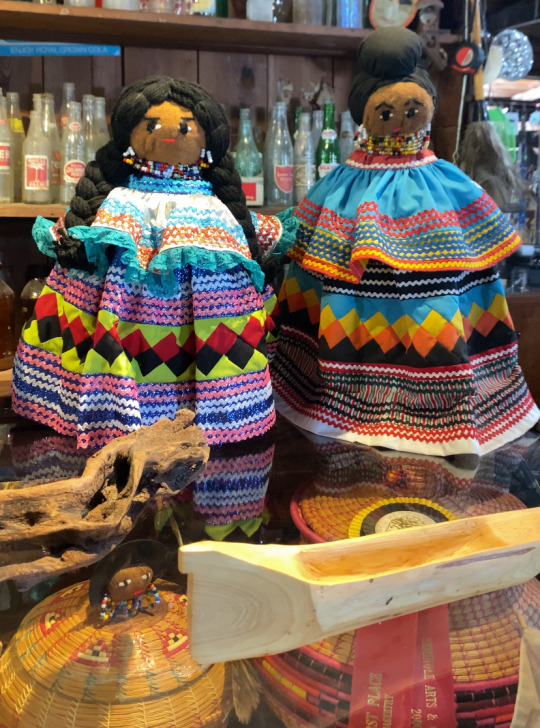
These people were forcibly removed, pushed South or murdered so their land could be taken in a conflict known to the United States as the First, Second and Third Seminole Wars. As they were pushed South, they encountered and assimilated various remaining populations of Pre-Columbian groups like the Calusa and Tequesta.
If you ask the modern members of these tribes, they will tell you it was a single war that is still being fought to this day, although with lawyers instead of weapons. You see, the Seminole and Miccosukee still have never signed a treaty with the US, and continue to have to fight for their Sovereignty and Land to this day. This has earned the Indigenous People of Florida the title of the Unconquered Peoples. Today, the tribes maintain traditional ways while also dealing with ever-encroaching settler beliefs and people. They still live off the land, but through the lens of eco-tourism most often rather than through subsistence living like many elders lived in their youth.
On my airboat trip, I got to stop and walk around Tear Island, a place where two Indigenous families began living in the 1800s and then abandoned in the 1920s. Being on these far off Islands, surrounded by the swamp and only accessible by boat, is where I feel most connected to my own Indigenous Taino ancestors, who would have traversed this same place but in a dugout canoe rather than an Airboat. The spirits of generations of people who lived and passed on are still here, within the water and trees, but also gathering around the cooking chickee when a fire is lit by their descendants.
High Tide at Chokoloskee
Known as the Western Gateway to the Everglades, we have Everglades City. It borders the Big Cypress Preserve and is a great place to stop to visit the Museum of the Everglades. The first settlers came here in the 1800s, it was incorporated in 1923. Past Everglades though, lies Chokoloskee. An Island with a Seminole name meaning ‘Old House’. This Island was only reachable by boat until 1956 when the bridge was built. John Weeks, the first permanent settler of Naples was one of the first settlers here as well. Before that, it was inhabited by the Calusa for more than 1,500 years.
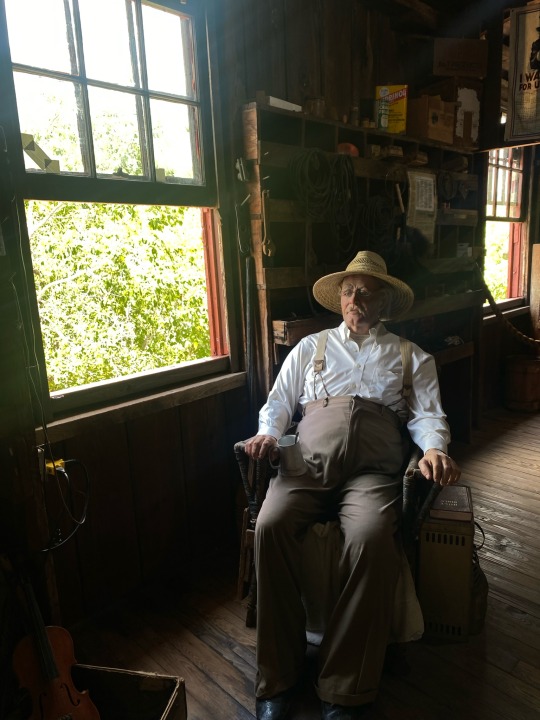
Stop by HavAnnA Cafe on your way to the southern tip of the Island where you’ll find a large red building on stilts. This is the Smallwood Store. Founded in 1906 by Ted Smallwood, this store was one of the only places Indigenous and White Floridians could go to trade for necessities. Ted Smallwood was a well-known ally of the Seminole and Miccosukee peoples, even learning to speak the language. Today, his granddaughter runs the store which is a museum and gift shop. There is even a replica of Ted himself, pictured above.
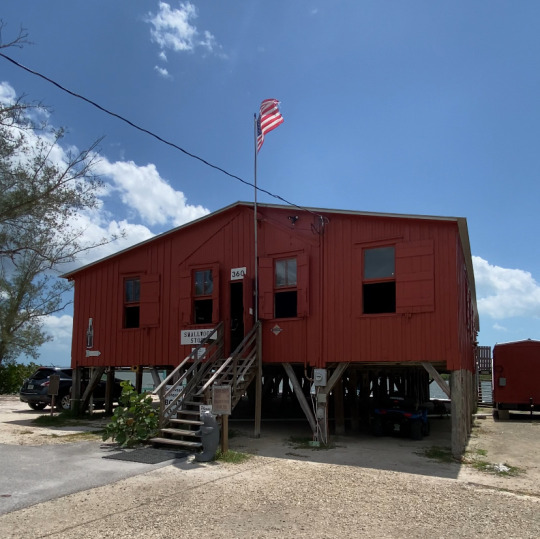
This history of this store and island is long, and tragic. A nearby massacre during the ‘Third Seminole War’ caused the remaining Indigenous people here to flee the Island. Later on, a famous murder of a well known criminal happened right outside the Smallwood Store. You can read more about both, and the 100 year anniversary of the building being raised here.

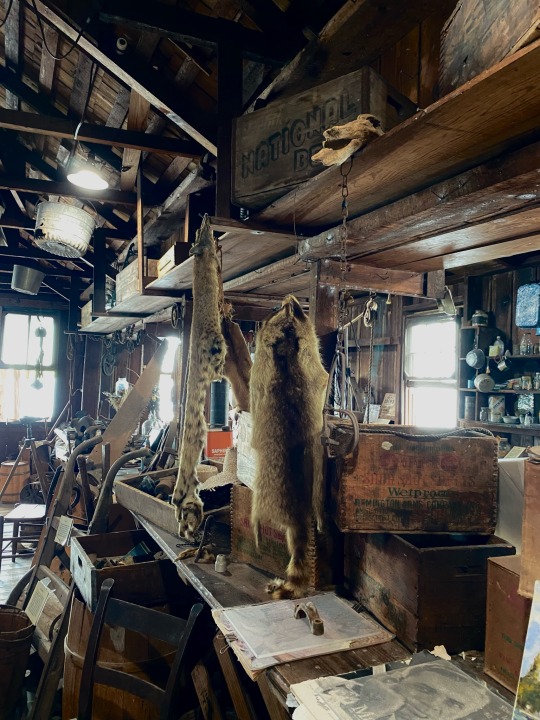
This is also a great spot to see where the fresh water of the Everglades meets the saltwater of the Florida Bay. Definitely give this place a visit.
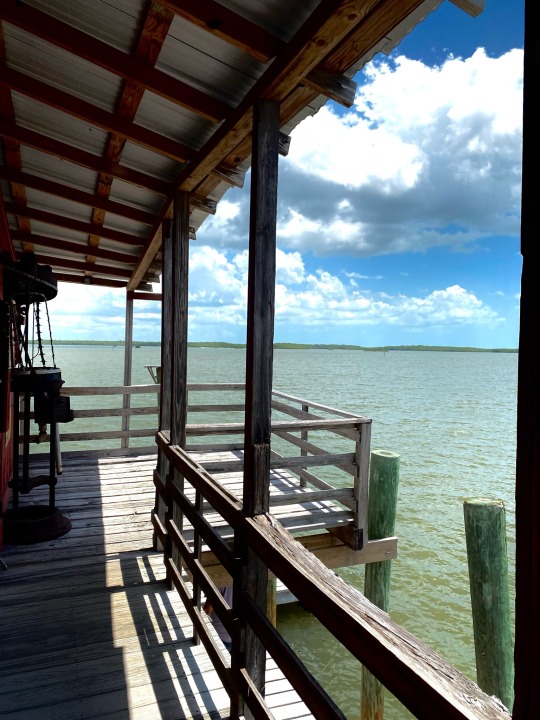
Splitting Storms: An Indigenous Folk Protection Charm
For some time now, I have noted the striking similarities between Seminole and Taíno beliefs around Twins and Weather. We even share a simple protection charm to ward off a bad storm I will share to you all.
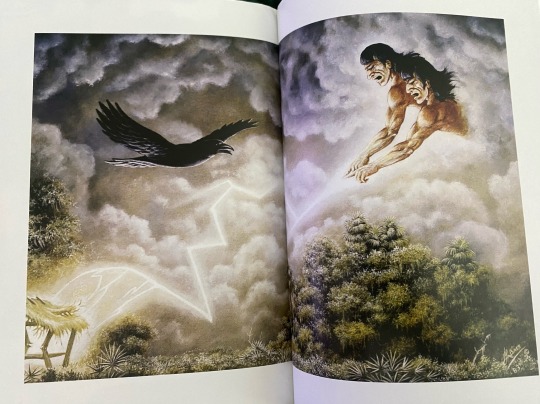
In Seminole belief, Twins are intrinsically tied to the weather. Many elders believed that keeping twins together can be dangerous, and they should be raised separately. To them, one is Thunder and the other is Lightning, even going as far to saying that having two twins in the same chickee can cause it to be struck.
In Taíno myth, we have two sets of twins associated with weather. Boinayel and Marohu are the Cemi related to the Wet and Dry seasons, Boinayel being the Raingiver and Marohu literally meaning “Without Clouds”. Then we have the ones who I would say share similarities to the Seminole Twins, Coatrisque and Gautaubá. These are Twin sons of the violent aspect of Atabey, known as Guabancex, Cacique of winds. Coatrisque is torrential rains, while Guatauba is Thunder and Lightning himself.

The charm is very well documented in both groups, as well as many others, and very straightforward. It’s the underlying belief that makes these two charms so similar. The linked article from earlier even includes a brief explanation of it.
Basically, when you know a big storm is coming, you want to place an axe in a spot on the front of your house, usually on a piling or piece of the roof that extends below the ground. Tie it down if you wish, for the winds. If you can, do it so the blade looks like it is coming down on the storm. The goal is to split the storm so it goes around the house. If we look at the myths, it’s clear the axe is there to split the Twins from each other, forcing them to go around the house, leaving it protected.
In the Caribbean, in practices like Lúcúmí and Palo Monte, we see the use of Matari, ‘Thunder Stones’. Genuine thunder stones from the Caribbean are actually said to be relics of Taíno axes, shaped like a tear drop almost, either passed down or found and used for various purposes, one being to ward off Lightning and Thunder!
Will Your Kids Know the Glades?
The Everglades are vital to my spiritual practice and lifestyle, as well as that of thousands of other Floridians. Even if you don’t live in the Swamp, its health affects the entire country.
Today, the dangers facing the Everglades are almost as abundant as the dangers inside it. Overdevelopment threatens the entire state. Just like we saw with Split Oak Forest recently. Environmental Protections seem to mean less and less because they don’t have the teeth to defend themselves. Included in these threatened protections is the sovereignty of the Seminole and Miccosukee Tribes, who just had to fight to keep Big Cypress as a preserve so they can continue their traditional use. They are fighting to hold onto their Land to this day.
All while threatening the Traditional Use by Indigenous Peoples, they continue to allow oil drilling even approving new projects within Big Cypress. The Army Corps of Engineers also heavily harms the environment every year through mismanagement of Okechobee and of the water levels within the Glades. It is up to everyday Floridians to fight to protect and better manage this precious natural resource before its gone forever. It is up to Witches all over to be stewards of our Lands, wherever that is. For us Florida Witches, we need to organize, donate and hex our politicians.
Luz 🕯️
#witchcraft#florida#bioregional animism#bruja#brujeria#florida witch#santeria#swamp witch#witch#traditional witchcraft#folk witchcraft#folk magic#folkloric witch#folk witch#espiritismo#santería#caribbean#everglades#animism#taino spirituality#taino#indigenous#cuban#witches#seminole#miccosukee#big cypress
25 notes
·
View notes
Photo

Mikasuki Indian cowboys Stanford and Josie Jumper
PHOTOGRAPHER: Irvin M. Peithmann
DATE: 1955 (circa)
NOTE: Photographed at Dania Reservation, Florida. Mid-1950's.
134 notes
·
View notes
Text
Anime Review
Doukyonin Wa Hiza TokiDoki Atama no Ue

Summary: Subaru Mikazuki is a 23-year-old introverted mystery writer, who adopts a stray cat named Haru by chance. While he initially remains distant, they gradually bond with each other. Part of the story is shown from his point of view. Initially before the death of his parents he was always reluctant to visit places where there are lots of people but after Haru came in his life, he understood the real value of love and started interacting with people in a better way.

Doukyounin Wa Hiza TokiDoki Atama no Ue or My Roommate is a Cat, is a beautiful anime from Spring of 2019, (I love cats if you haven't notice yet) is a cute Slice of life anime that follows the story of Subaru Mikazuki, a young mystery writer that lost both parents recently. For him, his novels are the most important, till the point that he stops eating and sleeping just to finish his projects.(this guy has a problem) He doesn't understand why he has to interact whit people (like the most of us) and he avoid it the better he can. One day while he was stuck whit his next project, he decided to take at home a stray cat that he found on the graveyard whit the hope of having inspiration for his next novel.
That way, Subaru start to see things in a different way, learning how to take care of another living creature and to interact whit her. Without notice, Subaru will start to open his closed world to new people, new feelings old friends, and faced the old scars of the lost of his parents. (this is so touching!) Meanwhile, Haru is a stray cat that was abandoned whit her siblings on a box, (don't do that please) for being the older, she learned to haunt and take care of the weak ones. When finally she stays alone, a young boy takes her to a house, and she decides to return the amiability for the food she was treated and also watch for Subaru to properly eats. (is so funny and sweet!) She is very protective and curious. She gets worried that Subaru might die if he don't eat and she promised to herself to never leave him alone since he doesn't know how to take care of himself. Both are a mystery for the other one, but along the way they will understand eachother a better a little bit more.

Do I have something negative to say about it? I will complain of the short 12 chapters like always. That aside this anime has a really good way of showing the point of view of a cat in a more realistic way. Also it shows how the memory of someone we lost, it stays forever on us and how the regrets of not doing many things can make difficult to recover. This lessons are on the middle of a lot of cute and touching moments. We will see the things from the point of view of Subaru and then from the point of view of Haru, a very interesting way of narrative. This anime also has a very good animation and great music that fits perfectly whit the story. If you wanna know how is to live whit a cat, this may be a perfect one for you! You'll definitely enjoy this adorable anime.

25 notes
·
View notes
Note
what do you think of rokudo?

As I stated before;
I 👏 CAN’T 👏 READ 👏 JAP👏AN👏ESE👏!
I can’t even give a solid opinion on Rokudo, because his entire arc is in Japanese! As far as the English translated manga goes, Rokudo was the only inmate to successfully escape Nanba Prison under Momoko’s watch. I don’t know his connection with Mikasuki or Team Elf, but I think he was on the run from the Zodiac Police.
As character design, I’d say “older Jyugo” with hints of Dabi from My Hero Academia. (How the hell is his inmate number “tattooed”??? To his eyeball? Can someone explain???) And for personality, he seems to act similar to Jyugo. Up until he accidentally kills Jun, and when asked who was she by Tauro, he said he didn’t even know her. Like what??? (Yeah, the only reason why I know this was because a lot of people were pissed off when this chapter came out last year.)
So bottom line, I don’t know Rokudo enough to like or hate him.
#nanbaka#nanbaka confessions#nanbaka the numbers#nanbaka manga#nanbaka rokudo#nanbaka 610 arc#nanbaka jun#nanbaka zodiac police#nanbaka mikasuki#op speaks
43 notes
·
View notes
Text
"Hey Orga, what should I do next? Is this our place? I won't stop until we get there.”

"How far do you want me to go?"
"All the way. Crush them to the very last bit."
— Mikazuki Augus and Orga Itsuka, episode 41, "Natural for a Human"
I saw this photo from the MBS AnimeFes and I just had to do it. IBO is my favorite of the Gundam shows and it reintroduced me to Gunpla assembly.
And oh man, I'm so moved by Mikazuki and Orga's devotion to each other. To see their seiyuu do their signature pose it just... thank you.
#mbs anime fes#gundam#iron blooded orphans#gundam tekketsu no orphans#yoshimasa hosoya#kawanishi kengo#mikasuki augus#orga itsuka#this gundam show destroyed every bit of me#but it got me back into gunpla assembly#seiyuu#i almost started crying
27 notes
·
View notes
Text
Alice Brown Davis
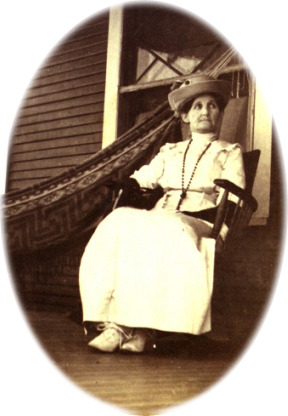
The first female Principal Chief of the Seminole Nation of Oklahoma, Alice Brown David (1852-1935) was an educator, a politician, and an advocate for Native issues.
One of seven children, Brown was a member of the Seminole Katcvlke, or Tiger Clan. When she was just 15, a cholera epidemic broke out in the tribe and both her parents died. She moved in with her older brother where she completed her education and began teaching others, both Seminole children and the children of freedmen.
As she grew, she received more and more prominence. When her brother, John F. Brown, was Chief, she worked as an interpreter and liaison. She was the postmistress, the superintendent of the Seminole Nation's girl's school, and a delegate to Mexico. Brown was fluent in English and Mikasuki.
In 1922, Brown was appointed the Principle Chief of the Seminole Nation by President Harding following the death of her brother. She was the first female Chief in Seminole history, and her appointment was controversial at first. As Chief, she won the respect of her people and focused on retaining and obtaining land, especially refusing to allow education to be taught by non-Native people. Tribal land affairs were her key political issue, including land allotments and oil leases.
#american history#world history#history#indigenous history#20th century#badass women#us history#women in history#alice brown davis#seminole#seminole county#seminole tribe#seminole nation#tiger clan#native americans#nativeamericans#native women#american indian movement#indigenous#land back#decolonization#indigenous sovereignty#indigenous people#indigenous resistance#decolonize
22 notes
·
View notes